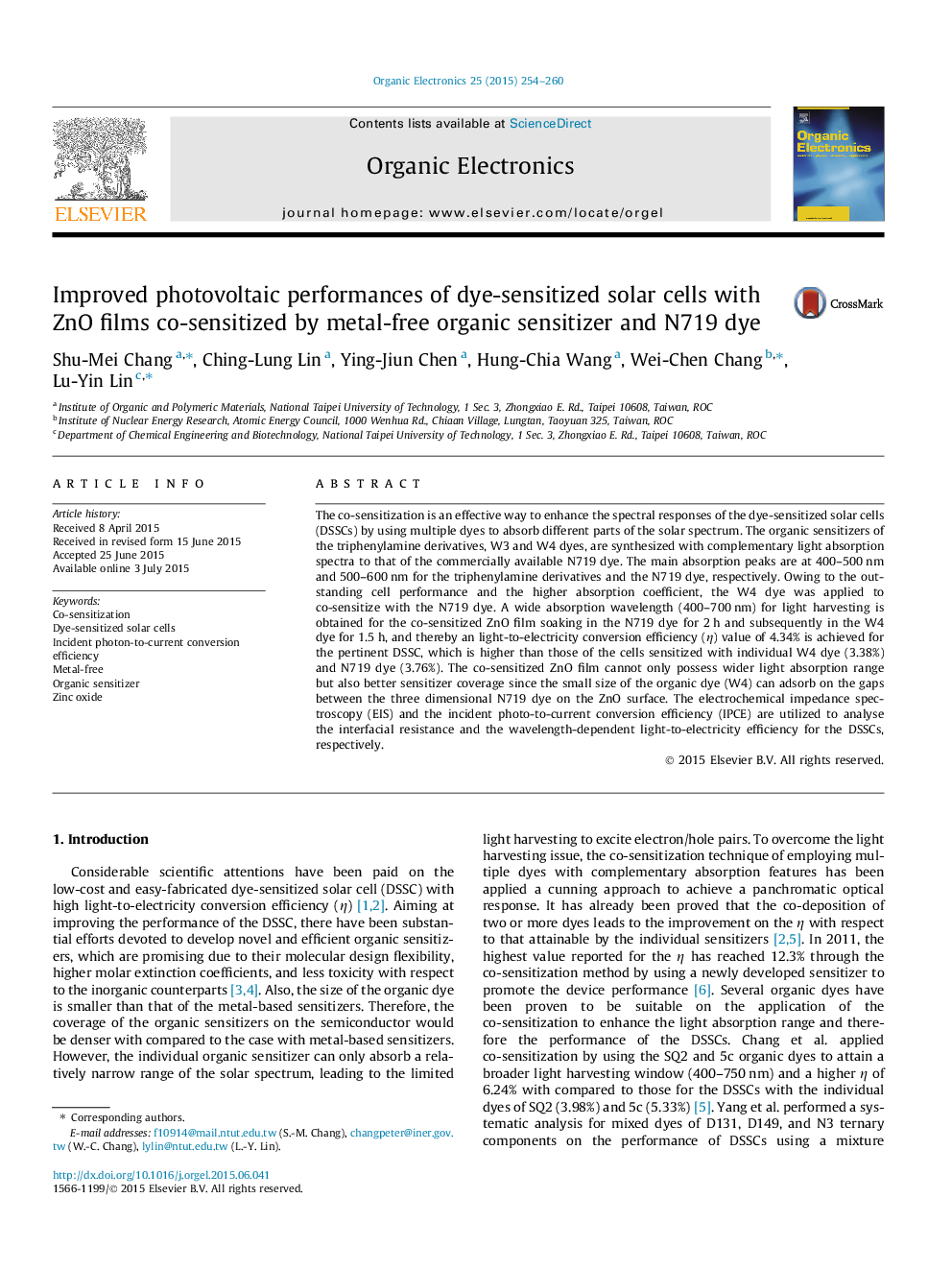| کد مقاله | کد نشریه | سال انتشار | مقاله انگلیسی | نسخه تمام متن |
|---|---|---|---|---|
| 1263649 | 1496832 | 2015 | 7 صفحه PDF | دانلود رایگان |

• Organic dyes of triphenylamine derivatives (W3 and W4 dyes) are synthesized.
• W3 and W4 dyes have complementary light absorption spectra to that of N719 dye.
• The ZnO film co-sensitized with N719 and W4 dyes shows wider absorption range.
• A higher cell efficiency of 4.34% is achieved for the co-sensitized solar cell.
• The co-sensitized film shows wider light absorption range and better dye coverage.
The co-sensitization is an effective way to enhance the spectral responses of the dye-sensitized solar cells (DSSCs) by using multiple dyes to absorb different parts of the solar spectrum. The organic sensitizers of the triphenylamine derivatives, W3 and W4 dyes, are synthesized with complementary light absorption spectra to that of the commercially available N719 dye. The main absorption peaks are at 400–500 nm and 500–600 nm for the triphenylamine derivatives and the N719 dye, respectively. Owing to the outstanding cell performance and the higher absorption coefficient, the W4 dye was applied to co-sensitize with the N719 dye. A wide absorption wavelength (400–700 nm) for light harvesting is obtained for the co-sensitized ZnO film soaking in the N719 dye for 2 h and subsequently in the W4 dye for 1.5 h, and thereby an light-to-electricity conversion efficiency (η) value of 4.34% is achieved for the pertinent DSSC, which is higher than those of the cells sensitized with individual W4 dye (3.38%) and N719 dye (3.76%). The co-sensitized ZnO film cannot only possess wider light absorption range but also better sensitizer coverage since the small size of the organic dye (W4) can adsorb on the gaps between the three dimensional N719 dye on the ZnO surface. The electrochemical impedance spectroscopy (EIS) and the incident photo-to-current conversion efficiency (IPCE) are utilized to analyse the interfacial resistance and the wavelength-dependent light-to-electricity efficiency for the DSSCs, respectively.
Figure optionsDownload as PowerPoint slide
Journal: Organic Electronics - Volume 25, October 2015, Pages 254–260